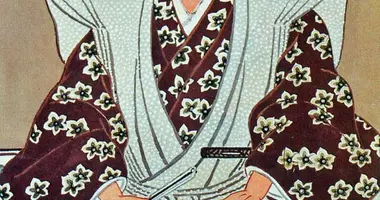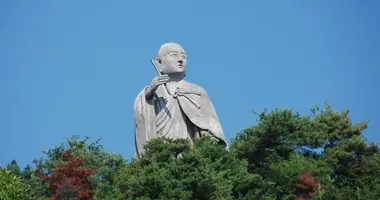Saigō Takamori: the quintessential hero of modern Japanese history
- Published on : 08/04/2024
- by : Japan Experience
- Youtube

Saigō Takamori was one of the most influential samurai in Japanese history and a key leader of the MeijiRestoration. Despite his legendary status, his role in the restoration led to the decline of the samurai class. His life was marked by contradictions, from supporting modernization to leading a rebellion against the Meiji government.
Early life and rise to prominence
Born in 1828 in Kagoshima, Satsuma Domain, to a family of low-ranking samurai, Saigō was distinguished by his impressive physique, samurai virtues, and ability to attract followers. He became commander of Satsuma forces in Kyoto and a key decision-maker in his domain.
Saigō arranged the surrender of the Chōshū domain to the shogunate in 1864-65 and negotiated the secret Satsuma-Chōshū alliance in 1866 through the intermediation of Sakamoto Ryoma. He also worked secretly to force the shogun's resignation in 1867, paving the way for the restoration of imperial rule.

Saigo Takamori
Role in the Meiji Restoration
Saigō led the coup d'état in January 1868 that inaugurated the Meiji era. He directed the campaign against shogunate supporters, ensuring the supremacy of the Imperial court. In a famous episode, Saigō and Thomas Glover negotiated the bloodless surrender of Edo Castle from shogunal official Katsu Kaishū in April 1868.
As a high-ranking member of the new government, Saigō was essential in abolishing the han system and establishing a conscript army. However, he grew concerned that Japan was losing its samurai spirit amidst the rapid modernization and westernization.
Reluctant participation in the Meiji government
Despite being awarded the highest honours for his role in the restoration, Saigō initially retired to Satsuma. Persuaded to join the government in 1871, he took command of the Imperial Guard. Saigō supported the abolition of the han system and introduction of conscription, albeit reluctantly.
As head of the 10,000-strong Imperial Guard, Saigō provided the military backing that enabled the government to eliminate the domains and potential opposition by the end of 1871. However, he declined to publicly support conscription, perhaps indicating his growing reservations about the direction of the new Japan.

Painting of Saigo Takamori in Western military uniform with one of his favorite dogs
The Korea debate and Saigō's resignation
In 1873, Saigō argued for war with Korea to chastise its insulting attitude and reinvigorate the samurai class. He even proposed an extraordinary plan to provoke his own murder in Korea to justify a declaration of war. When the plan was cancelled, Saigō resigned from all his positions in protest, creating an irreparable split in the nation's leadership.
Returning to Kagoshima, Saigō opened a private school emphasizing military training that attracted thousands of disaffected former samurai. The growing influence of Saigō's school and supporters in the local administration deeply concerned the Meiji government.
The Satsuma Rebellion and Saigō's death
In January 1877, Saigō's disciples attacked the Kagoshima arsenal, sparking the Satsuma Rebellion. Saigō reluctantly agreed to lead the rebels in a march to Tokyo to seek answers from the government. Met by the Imperial Japanese Army, the rebels fought fierce battles at Kumamoto Castle and Tabaruzaka.
Ultimately forced to retreat to Kagoshima, Saigō and his few hundred remaining samurai made a last stand on Shiroyama hill. Severely wounded, Saigō either committed seppuku or was beheaded by a follower to preserve his samurai honor. The rebellion's defeat dealt a final blow to the samurai class.

Saigo Takamori Statue, Kagoshima City, Kyushu, Japan
Legendary status and legacy
Although denounced as a rebel and traitor, Saigō's fame could not be subdued. Legends arose denying his death, and unable to overcome the people's affection for this paragon of samurai virtues, the government pardoned him posthumously in 1889. A famous bronze statue in Tokyo's Ueno Park depicts Saigō in hunting attire with his dog.
Saigō Takamori embodied the turbulent transition from feudal to modern Japan. A key leader of the Meiji Restoration, his ultimate rebellion highlighted the contradictions and human costs of rapid change. His life and death have inspired numerous artistic depictions, including the 2003 Hollywood film The Last Samurai, where Saigō was the model for Ken Watanabe's character. For further insight into this pivotal period, see our selection of books on Japanese history.

Saigo Takamori Statue, Ueno Park, Tokyo, Japan









